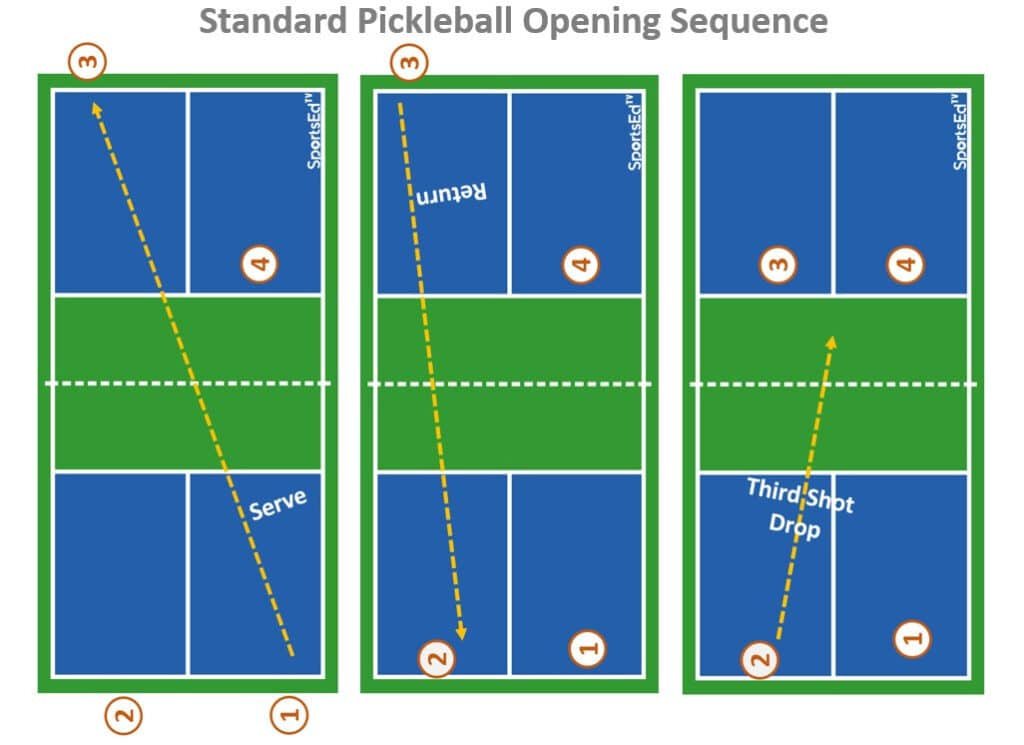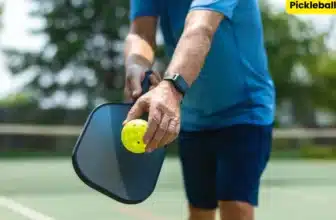
Are you already familiar with the basics of pickleball? No matter if you are an intermediate player and you want to improve your gameplay. You are at the right place. There are many new skills and techniques you may want to learn if you truly want to enjoy the game and defeat your opponents at the same time.
Here we are talking about this amazing move pickleball third shot drop. If you want to win the game and make your opponents weak, trust us learning this shot is important.
In this blog post, we will be talking about the third shot drop-in pickleball, why it is important, how and when to execute this type of shot, and how to master this ultimate move.
What is Pickleball Third Shot Drop?
Let’s now explore what a pickleball third shot drop is. We will declare it is your turn to serve after your team has already served twice in the match. In this situation, you hit a low, soft shot just over the net. It should ideally land in the kitchen which is also called the non-volley zone. You can consider it an amazing move that catches your opponents off guard and gives you control of the game.
The Importance of Pickleball third Shot Drop:
So why exactly should you know about this sort of shot in pickleball? If your opponent serves at the start of the game, a perfect third-shot drop can set you up for success. A third-shot drop gives you control of the game again and time to move to the net while your opponent has to return a difficult shot from close to the baseline.
When to Execute a Third Drop Shot in Pickleball?
It is very important to learn the timing of the third shot drop, after that, you can know the difference between winning and losing the game. That’s why you need to practice your timing and get that perfect drop shot every time. You want to hit it when you are moving from the baseline to the kitchen. This will stop your opponents from hitting the ball back at you while you are still far back.
Grasping the 3rd Shot Drop Technique:

Now, let’s get down to the details of how you hit a third shot drop. This type of shot is all about having control. Some important things to think about are these:
- Setting up: After the first serve of the match, you need to get close to the kitchen line, which is also called the non-volley zone line. This is the best position to make the drop shot.
- Grips: Use a soft grip to hold the paddle, which will let you touch and handle it better. Keep your grip on the paddle loose.
- Stepping: Keep your feet about shoulder-width apart. Your knees should be bent a little. This will help you stay flexible and ready to go.
- To get ready for the shot, backswing: Move the paddle slightly behind you. Now you know how to hit the ball softly over the net: keep the face of the racket open while you hit the ball. This will make the ball spin backward, and your shot will be perfect!
- Contact Point: For a controlled drop shot, you should try to make contact with the ball just below waist height as it comes toward you.
- Stroke Technique: For the third shot drop, use a short, tight swing. Pay attention to how your wrist moves and make sure your follow-through is smooth if you want to hit the ball over the net.
- Follow-through: After hitting the ball, let your paddle continue moving toward the goal. This is called “follow-through.” This tells us that the move is accurate and under control.
- Recovery: After hitting the third shot drop, quickly get back to a ready position. Think about what your opponent will do next and be ready to respond properly.
It takes a lot of work to get good at the third shot drop. If you can, try to work on your technique in the game. Pay attention to placing and consistency. To begin, hit the ball against a wall or practice with a partner until you are sure you can make the shot when the time comes.
What Mistakes Should You Avoid?
There will be times at the court when things don’t go as planned. Like any skill, the third shot drop has its pitfalls. One common mistake in pickleball is hitting the ball too hard or too high. Now how is it a mistake? Well, if you hit the ball too hard or a bit too high, you allow your opponents to easily attack it.
Another mistake that many people learning this technique usually make is failing to predict their opponent’s positioning. This t is simple to stop.
In this must put a greater focus on position. It will control than power to stay clear of these traps. Aim for the kitchen and keep the shots low. Make your rivals hit up, and that gives you the advantage. You can easily win the game. Further, constantly be aware of where your opponent is on the court and modify the placement of your shots accordingly.
Tips for Third Shot Drop Techniques:
Now, how can you learn the third shot drop? Here are some tips:
- You can always change the placement and speed of your shots to keep your opponents guessing.
- In this, you must stay relaxed and focused on it. If you are tense or worried, you will never be able to do the shot properly.
- And finally, practice with great patience. If you are regular this is best for learning moves. You can never expect to learn the move in a single day. If you keep working on it consistently, you will learn this move soon.
Final thought
Pickleball has a lot of great moves. These moves can help you win the game and beat your opponents. One move in Pickleball that can change the game is the third shot drop. It is easy to learn if you are doing hard work. It can help you beat your opponents. You will take your game to the next level if you learn this shot. It will help you with control and strategy as well.
FAQs
How do I get a third-shot dropback?
Stand close to the kitchen line when you return a third shot drop-in pickleball. You also need to be ready for a shot that comes in softly and slowly. A paddle with an open face can be used. To hit the ball back over the net accurately and with control, tilt it a little lower.
How can I work on my third shot drop by myself?
There is no such thing as impossible. You can also work on the third shot drop by yourself. It might be hard, but it’s not impossible. It’s possible to make a net or wall bounce back like the ball did. Pay attention to placing, control, and consistency. Change how you’re playing based on how the ball bounces back.






